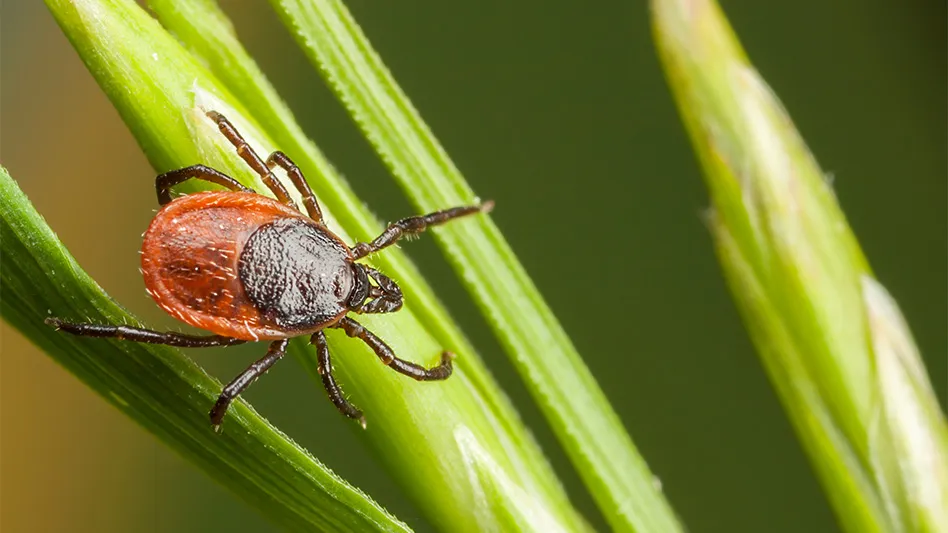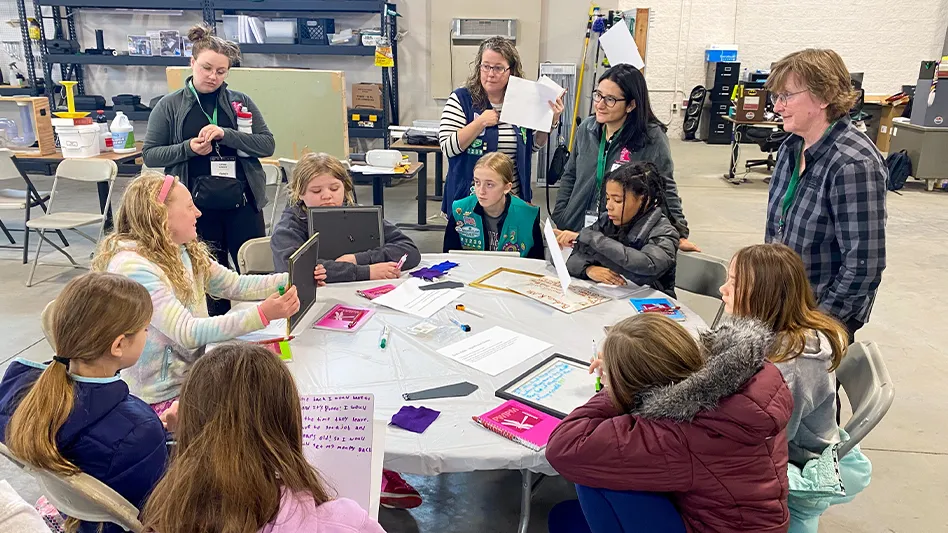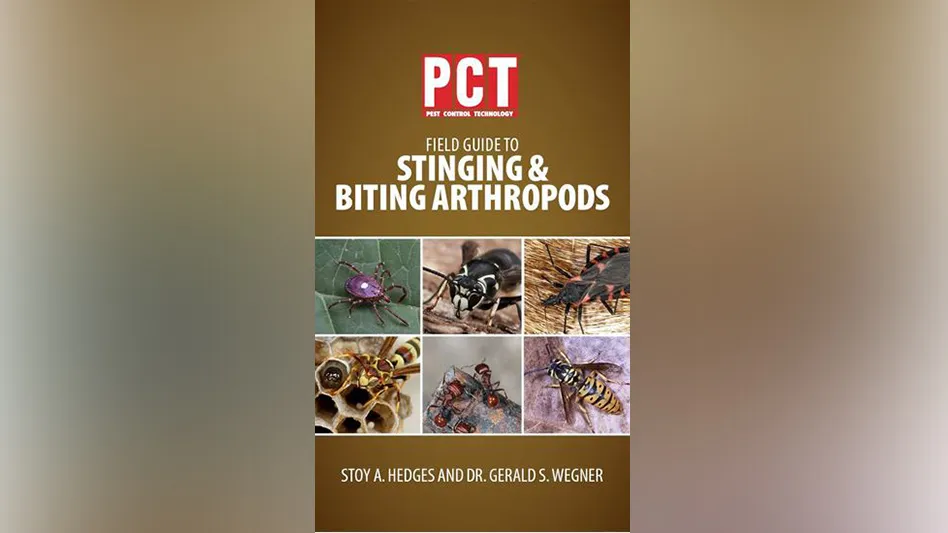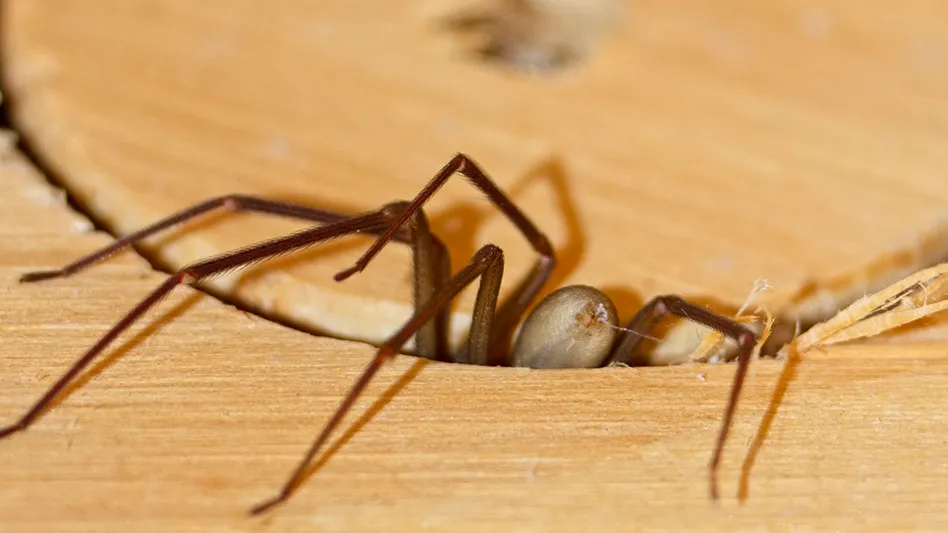
istock | Pete Muller
One of the most common questions I get from the field (and in general from friends and family) is, “What product will get rid of these darn spiders?!” I’ve also been well schooled by lots of people who say that spiders’ tiny feet don’t pick up enough pest control product so “nothing will work.” Hopefully this quick read will help dispel some myths and assist you in managing spiders around your customers’ property.
FEET. The reality is that spiders have feet pretty similar to their other friendly neighbors in the insect world. They usually have an arrangement of pads and claws. Yes, some spiders don’t have pads, but even on “claw only” spiders there is some terminal structure at the end of the leg that has the ability to touch a surface and absorb a pesticide product. Most spider legs are notoriously hairy, which provides plenty of attachment points for product to get stuck and slow down that little tiny dancer. Morphologically, while the spiders’ earth-bound contact points are usually small, they still have plenty of opportunity to collect surface-applied residual product. If you think about it, they have two more points of contact with the surface than an insect, so the opportunity is ripe for product transfer.
Now that I’ve told you it is completely possible at the micro level, I’m going to tell you that I think it is, in most cases, unnecessary to actually apply products with spiders as the target pest. There are exceptions to that, and I will be sure to address this as well.
WEBS. First, we will talk about web builders. Let us consider why the spider took the time to build a web. Web building can be a pretty laborious process. It takes about an hour for a spider to build a web. This is the typical orb weaver variety. Orb weavers will relocate nests about 20 percent of the time. They are functional and somewhat easy to repair. If you have ever watched an orb weaver do its thing, you may have noticed a beautiful web in the evening, but then it’s gone in the morning. Funnel weavers with those really tight, elaborate webs only have a relocation rate of about 1 percent and construction costs are high. The cost to repair is great, but the web is stronger and less likely to sustain damage. Spider silk is built from protein. This protein comes at a nutritional cost that requires feeding to continue. Yes, many spiders will consume old web to recover protein, but there is an energy investment that can’t be recovered. The whole goal of web building is nesting and feeding. There are also non-web spinning varieties like wolf, jumping and crab spiders. These hunters either will sit and wait or actively pursue prey, but they don’t build a trap out of silk. Still, the spiders are completing a lone purpose — eating.
FOOD. Spiders typically will consume inspects that are smaller than them. On occasion, a larger insect will get entwined in a web and a smaller spider will be able to subdue the prey. It is estimated that the world’s spiders eat between 400 and 800 million tons of insects, springtails and other invertebrates annually…you’re welcome! At the hyper-local level, a single spider will consume about 2,000 insects a year or five to six per day. That’s a lot of bugs to find or to have wander into a web. In fact, it’s so many that webs aren’t built solely on chance. Spiders hedge their bets with proper placement. After 400 million years they have kind of figured it out. I’ve been around a lot shorter than that, but I’ve managed to figure out where to park my car to find some food. Why not build a web at a buffet? If there are more bugs to catch in a specific location, the chance of one getting caught in the web increases and less work is involved to eat several six-legged meals in a day. Simple probability. What attracts insects? Everything from lighting to water, dirty grills to overgrown bushes. You know the stuff.
IPM. So, we now know that there is an investment for a spider to build a web and the reason it builds a web is to catch food. The logical thing to do now is to start offering IPM services. What can I adapt to make the environment less prone to spider food sources? Should I look at current webs and see what’s in them? If I go out to my front porch, I could find both a bunch of spiders and a bunch of moths (my wife is thrilled, but she knew what I was when she married me). The moths are attracted to my porch light that I leave on all the time. It even has one of those normal incandescent bulbs that really pulls them in. Could I do something about that? Could I put that light on a timer or change the bulb color to something less attractive? The spiders in the bushes have access to a bunch of things like crickets and beetles. I could likely do a band treatment around my home to limit the beetles and a granular bait to help with the crickets. This would take away the food sources and drive the spiders to find food elsewhere, like the perimeter of the property — or maybe even force them to leave altogether.
EXPECTATIONS. The last thing to consider is actual spider control. In some cases, spiders will be drawn to homes and there isn’t much you can to about the attraction. Growing up my family had a dark cedar-sided home and spiders were everywhere. We got grey vinyl siding in the 1980s and magically the lighter color siding didn’t have anywhere near the number of spiders around. Most customers won’t go to this extreme to rid their home of spiders. (It sure wasn’t the reason my family did it. It was just “all the rage” to get some fancy plastic stuff stuck on our home.) It did make the house look nice (to the humans, not the spiders). You’ll have to set some expectations in these cases. You may have to consider making an application of a product for spiders if you can’t do the other IPM steps as easily. I would suggest things like microencapsulated or dust products that can attach to their legs easier.
FINAL THOUGHTS. The big thing to remember is that spiders look at a house just like you do. They are pest management professionals. They see conducive conditions and zero in on them because the potential to score a big meal is so great. If you eliminate these conditions and manage the food source pests, spiders will manage themselves right out of the picture.
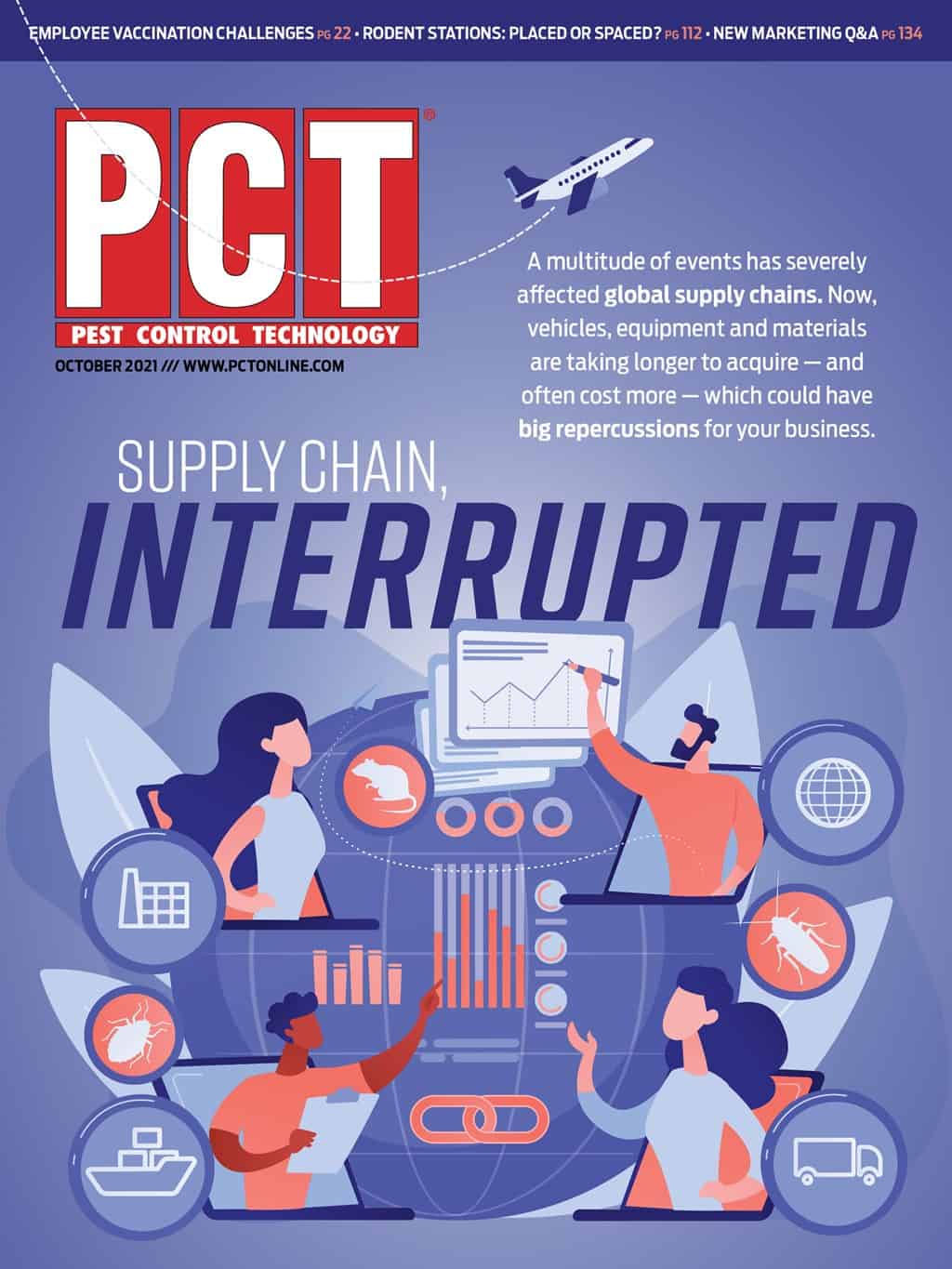
Explore the October 2021 Issue
Check out more from this issue and find you next story to read.
Latest from Pest Control Technology
- Viking Pest Control Organizes a Charity Bike Build for Local Families
- Gaining Control of Structure-Infesting Carpenter Ants
- Big Blue Bug’s Brian Goldman Receives Rhode Island Small Business Person of the Year Award
- UF Researchers Examine How Much Bait it Takes to Eliminate a Subterranean Termite Colony
- Women in Pest Control Group Continues to Grow, Provide Opportunities in the Industry
- NPMA Announces Results of 2024-2025 Board of Directors Election
- Massey Services Acquires Orange Environmental Services
- Hawx Pest Control Wins Bronze Stevie Award for Sustainability
